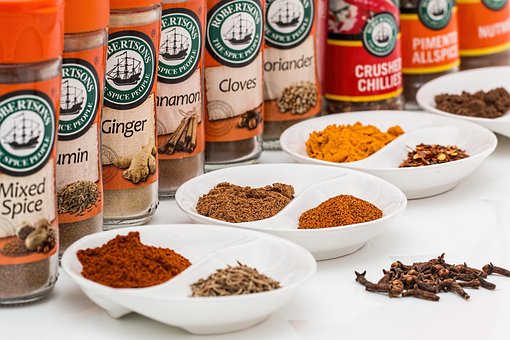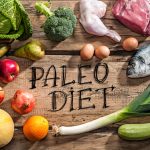Nowadays, a lot of the foods we love have a lot of additives in them. So, are you putting your health at risk? Nutritionist Zoe Wilson has the answers.
We no longer want to visit the village market every day like our ancestors did to buy fresh foods for dinner. We would rather have the ease of foods that last in the fridge for weeks, sometimes months.
We are not happy with products that look less colorful or taste less flavorful. Therefore, we add flavors, preservatives, and colors to our food during processing.
There are more than 300 approved additives in New Zealand.
Are all additives bad?
You can’t assume that a food is unhealthy just because it has additives. Additives can improve the taste and texture of food, making it easier to use. This means no more separated sauces or gluey baking powder. Sometimes additives contain extra nutrients, such as vitamins, antioxidants, minerals and fiber, which can be beneficial to your health.
Natural food additives like fat, salt and sugar can be bad for you if you eat more than you should.
Many of us are trying to improve our health by getting back to simpler foods, whole foods without all the processing and chemical fertilizers. We are wanting natural colors and flavors without additives. The food industry is taking note.
Consumers are demanding simpler ingredient lists and fewer additives from the food industry. A product that is close to homemade or natural.
An increasing number of products on the store shelves are claiming to be “all natural.” Eating all natural foods makes us feel like we are doing something to eat correctly, but that these foods are not always more whole or pure.
Take, for example, lollies by The Natural Confectionery Company. They use natural colorings, which is a plus, but they also use a lot of sugar, which is not such a plus.
When we see a label that says it is ‘natural’, we have to question what is not being said.
The phrase “no artificial additives” does not mean that a food is free from added fat, salt or sugar. These are all natural additives. It’s not a good idea to think of these product claims as an endorsement of the product’s health benefits.
When considering if a food containing artificial additives is a good choice, you should not only look at what else is in the mix, but also consider other factors.
In the future our food will probably contain some additives. I don’t think the majority of us will want to shop daily to obtain just picked food, we will continue to demand food that stays fresh in the fridge for more than a few days. After a certain point, it is impossible to reduce the amount of additives in food any further.
We will continue to look for foods that don’t go brown when they get old. And we’ll still want dinners that are quick and easy to make and don’t require a lot of time or effort.
We should demand the best health standards for our food, but it’s important to remember that all food additives have gone through a difficult government approval process. Eating additives is not a problem for most people. Sensitivities, while extremely unpleasant, are not common.
Common Food Additives:
1. Colors – Food Dyes
The chief offenders of processed food coloring are annatto (160B), tartrazine (102), sunset yellow (110), amaranth (123), and brilliant blue (133), which all add unnatural colors to food. These colors have been reported to cause symptoms, particularly in children.
The case against eating colorfully: The chemicals used for dying foods colors are often derived from petroleum.
According to nutritionist Stephanie Middleberg’s research, many of the chemicals found in food can be linked to hyperactivity, cancer, allergies, and more. These chemicals are found in everything from the bright yellow cheese in the dairy aisle to the filling inside your granola bars.
Look for products that do not contain artificial colors and choose them over products that do contain artificial colors when possible.
READ MORE: Red Dye Food Allergy
2. Sulfite (Sulphite) Preservatives
Sulfur dioxide is a substance that is common in dried fruit and wine. It is used to stop fruits, such as apples and apricots, from browning. Sulfites help maintain food colour, extend shelf life and prevent the growth of bacteria.
Food and drinks that often contain sulfites: frozen fruits and veggies, fruit juices, jams, jellies, dried fruits like raisins and apricots, cereal, cornmeal, crackers even condiments.
Many preservatives, including sulfites, can cause symptoms in sensitive people.
Symptoms of a sulfite sensitivity include: hives, abdominal pain, nausea, diarrhea, asthma, flushing, difficulty swallowing, dizziness and contact dermatitis.
The FSANZ’s 2005 research found that a very small proportion of the population, especially children aged 2-5, were consuming more sulfite preservatives than the recommended daily limit.
These preservatives are found in dried fruit, muesli, other breakfast cereals and snack foods containing fruit. There are an increasing number of pre-made fruit snacks and health food bars available, making it easier to consume them.
Sulfites are not a new additive and are safe for most people. For centuries, people have been adding a little bit of sulphites to their food and drinks. You are probably consuming sulfites without realizing it.
Other names for sulfites include: potassium bisulphite, sodium bisulphite, sodium dithionite and sulphur dioxide.
3. Flavor Enhancers – MSG
Flavor enhancers are added to savory snacks and sauces to enhance the flavor of the food. The most widely known is monosodium glutamate (MSG). Glutamate is a compound that naturally occurs in many foods. It is a key component of proteins and can make food taste more intense. Foods that are high in glutamate can be used as the foundation for many meals.
Many sauces that are used for savory snacks, stocks, and stir-fries may contain MSG. The usage of flavor enhancers in products has risen greatly in the last ten to fifteen years.
The FDA approves MSG, and deems it safe for consumption. Foods that have MSG in them though have to make sure it is put on their label. Naturally occurring MSG in foods will be labeled differently then foods with added MSG.
Common products that contain MSG: chips, canned soups, condiments, salad dressings, deli meats and frozen meals. Many restaurants use MSG in frying chicken to your favorite Chinese takeout.
MSG symptom complex can cause symptoms such as nausea, fatigue, heart palpitations, headache, sweating, numbness, chest pain, hives, and swelling in the throat. Glutamates with the numbers 621-635 (this includes MSG which is number 621) are likely to be a problem.
We are now eating them more often as a way to have a quick family dinner.
READ MORE: Monosodium Glutamate: MSG Controversy Continues
5. Soy, Soy, and more Soy
If you’re keeping an eye on where your food comes from, you’re probably aware of the “soysplosion.” And it’s true: Soy is everywhere. Some fermented soy products, like miso and tempeh, are good for you, while other products like the canola oil in margarine and processed snacks, are not as healthy.
Processed soybean oil is very different from its plant-based relatives, and has no nutritional value. The soybeans used to make it were engineered to isolate the protein, and almost all soybeans in the US are genetically modified (GMO).
Although more research is needed on the health impacts of genetically modified crops, some studies have shown that they may be harmful to human health. The best way to avoid GMOs is to buy soy products that are either 100% organic or that are labeled as non-GMO.
According to Middleberg, you should avoid soy protein isolate (SPI).
Some people may experience an allergic reaction to soy protein, which causes the immune system to respond abnormally. Soy allergies are common in babies and children. Symptoms may include: itching, tingling in lips, nausea, diarrhea, shortness of breath, hives, and dizziness.
READ MORE: Get Leguminated: Soybeans And Soy Foods
6. The Deal with Sugar – Added Sugars
The average American consumes 22 teaspoons of sugar per day, which is three times the recommended amount. Six of those teaspoons were likely in the fizzy drink consumed at lunch. Yikes.
You can’t simply switch from sugar to artificial sweeteners and call it quits. Fake sugars like aspartame, neotame, and saccharin can be detrimental to your health because they are considered foreign substances by your body.
Artificial sugar is often more intense-tasting than regular sugar, which screws up your perception and leaves you craving something else to curb your sweet tooth.
It should be noted that sucralose is considered safer than the other artificial sugars. Stevia is a plant based alternative sweetener.
If you want to make your food or drink more sweet try using raw organic honey or pure maple syrup. Slowly but surely, your palette will readjust.
Sugary soft drinks often contain brominated vegetable oil, which is an unhealthy ingredient. Brominated vegetable oil or BVO is banned in some countries. It is not banned in the U.S.
BVO is a food additive that is often used in citrus sodas and it is also a flame retardant. BVO can build up in your body over time. You may want to think twice about that lemon-lime drink since BVO doesn’t have to be listed on labels.
READ MORE: How Much Sugar Is Safe To Eat?
7. Salt for Good Measure
Since salt is a cheap flavoring that is generally liked by everyone, food producers put it in and on a lot of what you eat. Salt is also a preservative, so you’ll find it heaped into pre-packaged foods.
You should not eat more than 6g of salt a day. As you know too much salt can cause numerous health conditions such as: high blood pressure (hypertension) and weight gain.
In the UK the general consumption of salt is around 8.1 grams.
The Dietary Guidelines for Americans recommends adults limit sodium intake to less than 2,300 mg per day—that’s equal to about 1 teaspoon of table salt!
To cut back on salt avoid foods that need a dip, this includes chicken fingers and celery sticks.
More ways to avoid salt overload? Request sauce on the side, choose vinegar-based dressings, and monitor how much additional white stuff you’re consuming with your food. A small amount of salt is all that is needed to add flavor and, as your taste buds adjust, you will need less salt to feel satisfied.
READ MORE: Is Pink Himalayan Salt Better Than Regular Salt?
8. Meat Matters
A majority of antibiotics sold in the States are fed to farm animals to promote growth and fatness, as well as to help them survive difficult conditions.
There are a few ways to try to avoid consuming antibiotics, such as choosing meats from a local source that doesn’t use them, and being aware of how the animals were raised. However, it is getting increasingly difficult to completely avoid them.
In addition to antibiotics, a lot of our livestock is given hormones to help them get bigger even though it doesn’t make them taste any better.
Beef is impacted by steroids like estradiol, testosterone, progesterone, and synthetic forms of estrogen.
Of all antibiotics sold in the United States, approximately 80% are sold for use in animal agriculture. There is growing evidence that antibiotic resistance in humans is promoted by the widespread use of nontherapeutic antibiotics in animals. Many countries have already restricted antibiotic use in animal agriculture.
Organic animal products contain less antibiotic-resistant bacteria than non-organic animal products. Studies have shown that reducing the use of antibiotics in animals reduces the number of antibiotic-resistant bacteria the meat contains.
Ask the butcher how the animal was raised and if the meat is hormone-free.
READ MORE: The Worthy Cost Of Organic Food
The Good News
If you have a sensitivity to an additive, you may not have to entirely avoid a particular additive if you simply cut down on the amount you consume.
You should be careful not to cut out any entire food groups because you could risk missing out on key nutrients. Instead, look for an alternative within that food group that is free of the additive that causes you a problem.
If you think you may be sensitive to something, you could try an elimination diet with the help of a dietitian. This involves removing all potential problem foods for a period of time, then slowly reintroducing them to see which particular additives may be causing the problem.
Conclusion
The food industry is becoming increasingly dangerous. You have more power than ever before to find out information about what you are putting into your body so that you can make smart choices.
It’s a good idea to check the ingredient labels before buying something, pay attention to certifications, and try to buy real food whenever possible.
Shop your local farmers’ market, limit factory-made foods (that includes pre-packaged items), try not to eat things that contain ingredients you can’t pronounce, and aim to eat seasonal produce that doesn’t have to be preserved and grows close to home.









